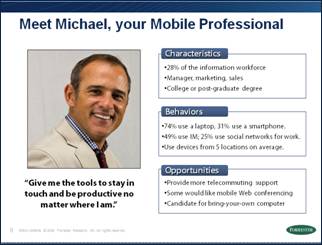 During a recent internal jam session, Connie Moore and I were jamming on big trends we see coming together in the BPM space. Much of our discussion centered on social BPM and process professionals wresting control from IT over their process improvement initiatives. By the end of the jam session, Connie and I formed a stark picture of business process professionals and business users in open revolt against IT – pitchforks in hand – demanding greater collaboration and inclusion across all phases of the process lifecycle.
During a recent internal jam session, Connie Moore and I were jamming on big trends we see coming together in the BPM space. Much of our discussion centered on social BPM and process professionals wresting control from IT over their process improvement initiatives. By the end of the jam session, Connie and I formed a stark picture of business process professionals and business users in open revolt against IT – pitchforks in hand – demanding greater collaboration and inclusion across all phases of the process lifecycle.
This is a key theme we’ve been hearing through customer inquiry and one-on-one conversations – most notably at last October's Business Technology Forum and our recent EA Forum. In response, IT is trying to figure out how to give business process professionals and business users greater control over – and flexibility with – discovery, development, and deployment of process solutions. And if IT isn’t able to provide greater control, in some cases process professionals are going outside – and behind the back – of IT to improve business processes within their organizations.
Connie and I grappled with the best way to describe this movement and ultimately settled on the term “process populism”.
Process populism is grounded in the tech populism movement that Forrester heralded a few years back, and mirrors the current populist fervor we’re seeing in society – look no further than the Tea Party rallies for evidence of citizen outrage over bloated government and demanding greater transparency and control. Wikipedia’s definition of populism succinctly describes the populist movement we’re seeing in the BPM space:
Populism, defined either as an ideology, a political philosophy, or a type of discourse, is a type of political-social thought which juxtaposes "the people" against "the elites", and urges social and political system changes (from Wikipedia)
In the BPM world, process populism is being fueled by:
- A changing workforce – Meet Michael (see below). According to Forrester's latest Workforce Personas research (covered by Ted Schadler), Michael represents 28% of the workforce. Michael is a social butterfly, is very mobile, and has better technology at home than what his employer issues to its workforce. In other words, Michael is pretty tech savvy and wants greater control over his work environment and business processes.
- Business leads fed up waiting for IT – Often IT is tied up with big corporate initiatives – ERP, CRM, SCM – and the business users can’t get any support for BPM so they turn to the cloud as a solution. One “Michael” we recently spoke with decided he couldn’t wait any longer for IT to help him with his broken process, so he took his process into the cloud. This “Michael” used Appian’s BPM SaaS offering to build out and deploy his business processes with zero help from IT and at a fraction of the cost.
- Greater focus on personal productivity – With a smaller workforce, employees across the board are feeling the heat. End users are pushing business process professionals and IT to provide better tools for monitoring and managing personal productivity. Recently, I downloaded Xobni (www.xobni.com) a neat little Microsoft Outlook add-in that provides e-mail analytics – I can view who sends me the most e-mail, how many e-mails are sent directly to me vs. cc:’d, and other e-mail related analytics. It’s a really nice and simple tool for spotting e-mail trends and improving my productivity with my out-of-control in-box. Your end users want these same types of simple tools to help them better manage and learn from the business processes they interact with every day.
- Internal social business networks – At its core BPM has always been a social activity. Bringing teams together to collaborate on describing, defining, and scoping their process solutions. In the past only the “chosen few” were included in the process improvement conversation (i.e., business process re-engineering). But now everyone wants in on the conversation – including your front-line workers, your customers, and your partners. If you don’t find a way to bring their voices in to the conversation, expect to see “shadow” processes pop up that you have little control over.
What's It Mean?
Like it or not, the BPM discipline has evolved to a point where it is accessible to everyone in the organization. And now the technology is more accessible than ever through BPM software-as-a-service offerings, such as Appian Anywhere and Lombardi Blueprint. If harnessed properly, the process populism movement presents process professionals with a unique opportunity to extend the reach of BPM within their organizations and beyond traditional organizational boundaries. However, if ignored expect stakeholders – including end users, partners, and customers – to take matters into their own hands.
What's Your Take?
I want to hear from you. Let me know if you think the process populism movement will force IT to give up more control over BPM intiaitiatives. If you're an IT manager or executive, let me know if line of business owners are demanding greater control over process improvement and how you are responding to this shift. If you're a process professional, have you gone outside or around IT to jump start your process improvement initiative? Post your thoughts in the comments section or feel free to shoot me a quick e-mail at crichardson@forrester.com.

